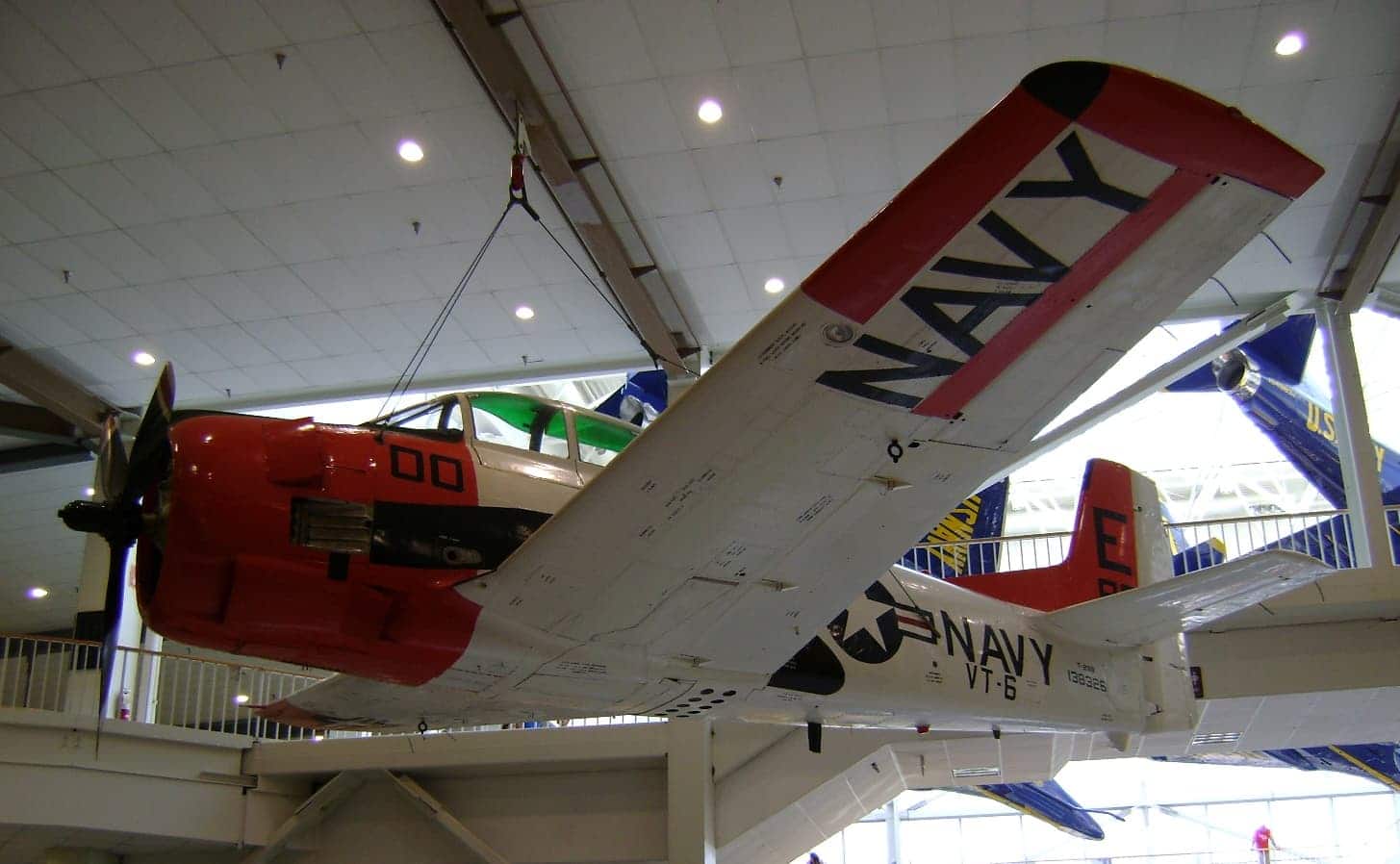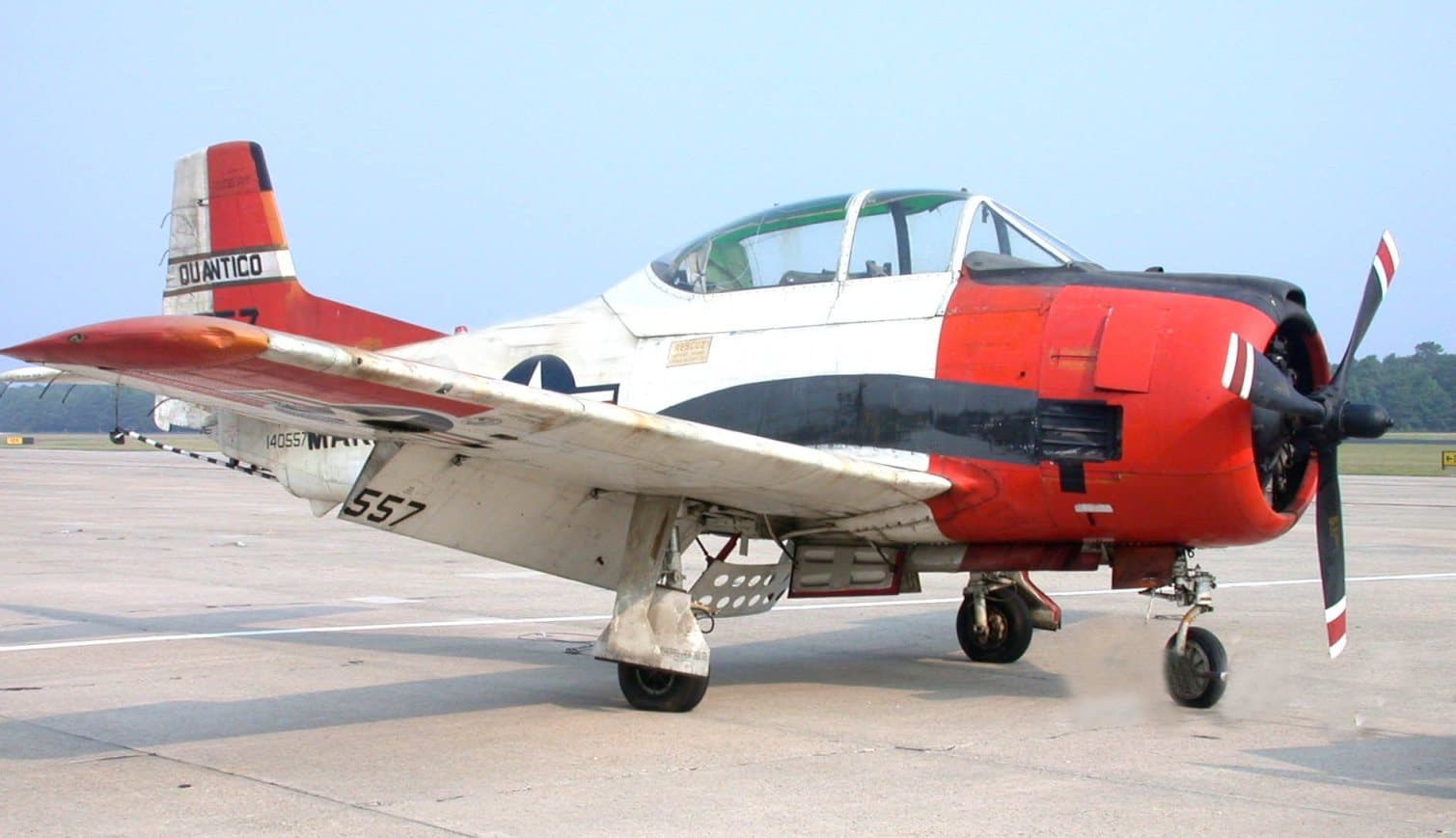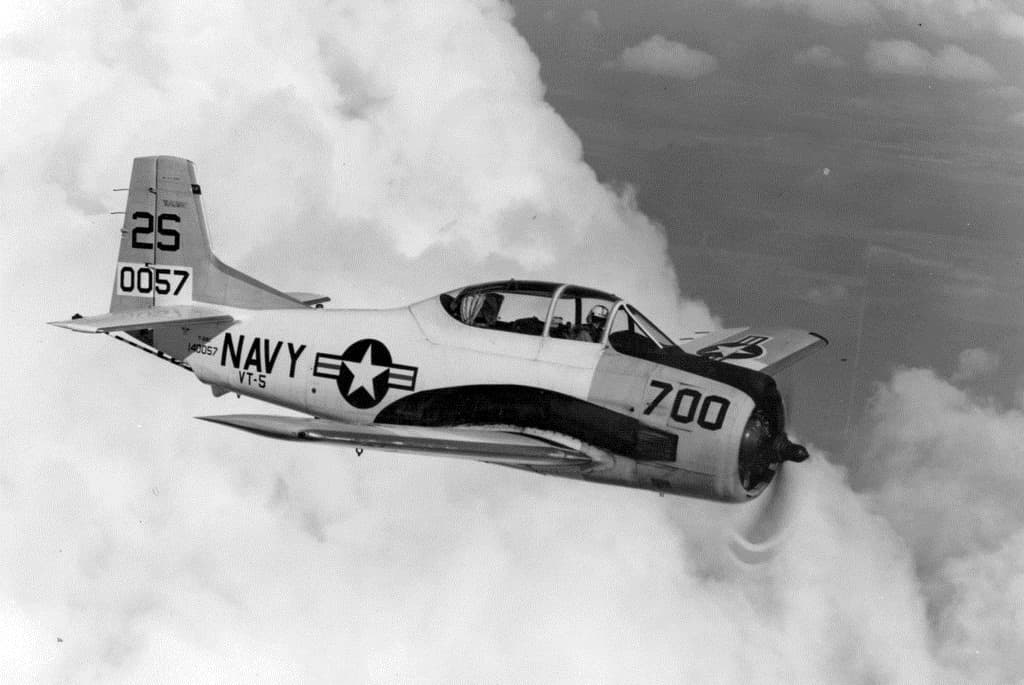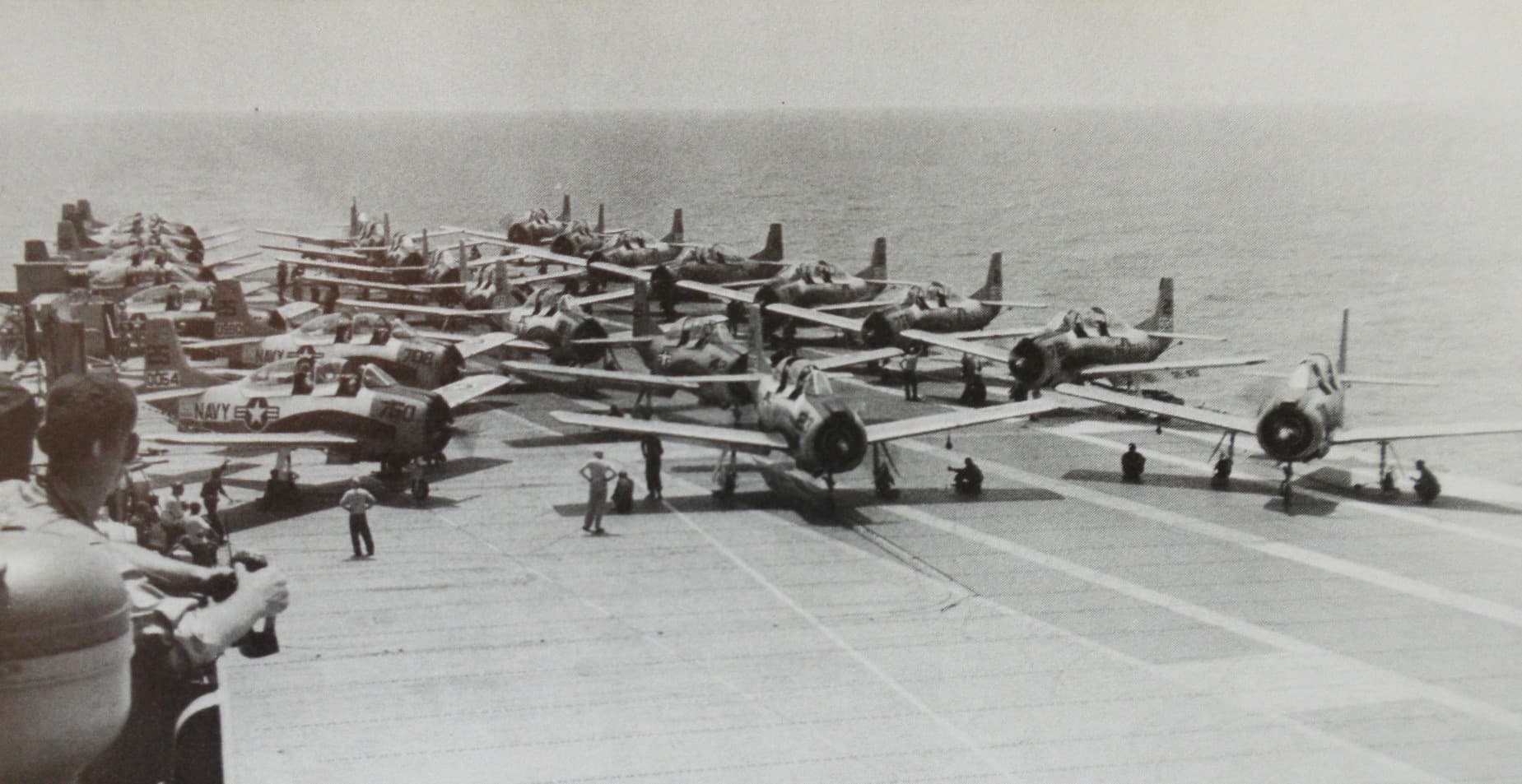A Sleeker and Shapelier T-28 Trojan
All Navy T-28s sported lower-profile canopies than those fitted to T-28As. Navy engine cowlings were modified to fit the larger R-1820 engine and a total of six engine exhaust stacks. Bravos also had smaller castering nose wheels and an under-fuselage speed brake- designed into but unused on the T-28A. Like the T-28A, Navy Bravo models were capable of weapons delivery training employing sighting systems and underwing hard points for mounting gun pods and bomb and missile pylons. All T-28 wings were configured with a pronounced dihedral.

If You Earned Wings of Gold, You Almost Certainly Flew the Trojan
T-28Bs were the workhorses of Naval Air Training Command (NATC) for decades. Trojans were used for the basic, advanced, instrument, tactical transition, and aerial gunnery flight training syllabi. T-28s equipped nine VT (training) squadrons at Naval Air Station (NAS) Pensacola and another two VT squadrons at NAS Meridian for several years. For many student aviators, the next step in the pipeline toward Wings of Gold was another NAA product, the North American T-2 Buckeye jet trainer.

Versatility was a Trojan Characteristic
Almost every NAS or Marine Corps Air Station (MCAS) had a T-28 or two assigned to it. Attack Squadron ONE TWO TWO (VA-122) Flying Eagles on the West Coast and VA-42 Green Pawns on the East Coast used T-28s as instrument trainers for a time. Trojans were also employed as drone controllers, air station utility, and proficiency training aircraft with utility and composite squadrons. The USAF and US Army also operated limited numbers of Bravos, primarily as test and chase aircraft and for research.

Call the Ball
The tailhook-equipped T-28C variant first took to the skies on 19 September 1955. The Charlie was lengthened, strengthened, and adapted so it could land aboard aircraft carriers. The 299 T-28Cs built by NAA (and the 72 T-28As converted to Charlies) were equipped with smaller-diameter propellers to better deal with nose dipping caused by tailhook engagement and runout of the arresting cable.
Landing gear oleo travel was increased to better absorb the shock of landings and seldom-used catapult launches. Due to their strengthened airframes, Charlies were not quite as spritely as Bravos. They were three miles per hour slower, with a 1,500-foot lower service ceiling, a slower rate of climb, and reduced range.

The Sound of Naval Aviation for Decades
The throaty snarl of Trojan engines powering student aviator-flown T-28s could be heard almost continuously along the Gulf Coast during the late 1950s, 1960s, 1970s, and into the early 1980s. Entire generations of Navy and Marine Corps pilots learned to fly in T-28Bs and made their first carrier landings in T-28Cs- many aboard the Blue Ghost– the training carrier USS Lexington (CVT-16).
Whether wearing the early bright yellow or the later white and red/red-orange colors of NATC aircraft, Navy and Marine Corps T-28s seldom fail to stir fond memories among those who learned to fly in them. The last T-28s in Navy service were retired by VT-27 Boomers at NAS Corpus Christi during the Spring of 1984.


[…] the Curtiss C-46 Commando and Douglas C-47 Skytrain airlifters, Douglas B-26K Invader bombers, and North American T-28D Trojan counter insurgency (COIN) aircraft, the group is still operational as the 1st Special Operations […]